Iowa Teen Had Accepted His Chest Deformity — Then a TikTok Video Changed His Life (Exclusive)
Carson Sudbeck didn't think much about his concave chest until he was scrolling TikTok and discovered corrective surgery
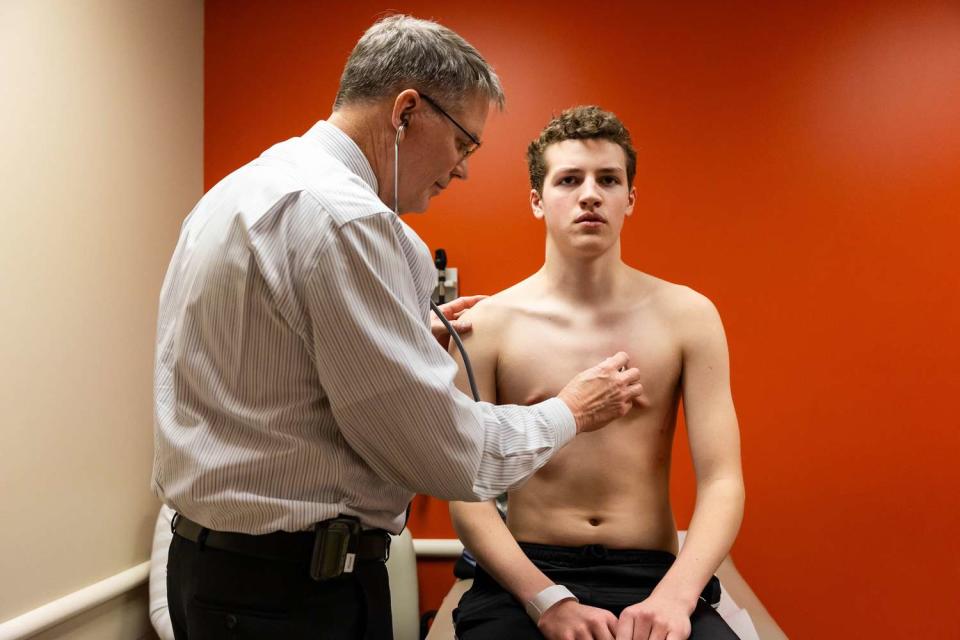
Bonnie Ryan/Children's Nebraska
Carson Sudbeck was born with a concave chest.
“When I was younger, it definitely was not very prominent — you could just barely tell it was there," says Carson, 16. "And as I grew, the hole also grew — to the point where it was very obvious I had a caved-in chest."
He would make jokes about it, says his mom Emily Sudbeck. "He'd say, 'It's not quite deep enough for a bowl of cereal — it's more of a chips and dip holder.'"
The high school junior from Hinton, Iowa, has an older brother and two younger sisters — but neither his siblings nor parents had the deformity. "Everyone I knew had a normal chest," he says.
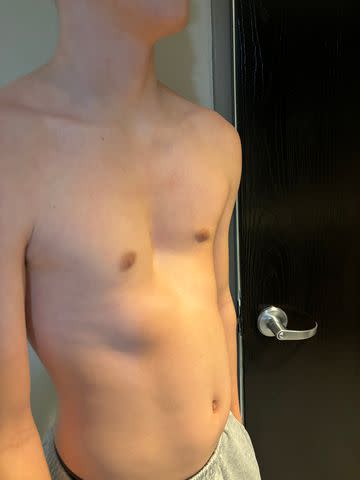
Courtesy of the Sudbeck Family
Carson Sudbeck before his surgical repair for pectus excavatumCarson had long made peace with his uniqueness. Then, in June 2023, he saw a social media post by someone who'd dealt with the same thing.
“I was scrolling through TikTok and a video showed a guy talking about it," he says. "He showed an illustration of a chest that looked like mine and said he'd had surgery to fix it."
It was the first time Carson actually learned that there was a name for his condition: pectus excavatum. In severe cases, like Carson’s, the sunken breastbone can make it seem like the center of a person’s chest has been scooped out, according to Mayo Clinic.
Googling his newly realized diagnosis, Carson found more information that convinced him that he, too, needed the corrective surgery.
He learned that pectus excavatum could cause problems with lung capacity and interfere with heartbeat and blood flow. It could lead to fatigue, shortness of breath, lowered stamina, chest pain and heart palpitations. Carson thought about the occasional shortness of breath he experienced while running track and cross country and playing basketball. Now it all made sense.
He also read that his condition could cause long-term arthritis. "I was like, 'I already got back pain,'" he says. "I read enough. I was like, 'I'll probably just get this fixed.'"
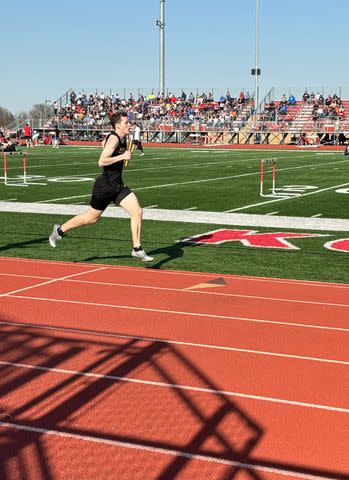
Courtesy of the Sudbeck Family
Carson Sudbeck competing in track meetRelated: Teen Had Half Her Brain Removed as a Baby — Now She’s Living a ‘Glass Half-Full Life’ (Exclusive)
A few days later Carson asked his parents if he could have the corrective surgery, which involved putting metal rods in his chest. He said he got the idea from TikTok.
"I rolled my eyes,” recalls Emily, a special education paraprofessional. “I was like, 'Carson, you do know that not everything on the internet is true?'"
Carson says it was a hard sell. “I went back and did some more research. The more research I did, the more I told them, ‘It’s not just for aesthetics, it has health benefits for lung capacity and blood flow.'" He knew that the surgery could improve many areas of his physical and mental health,
Emily says she and Carson's father Todd Sudbeck, an operations and maintenance instructor for an energy company, were shocked. “Up until this point, his chest had never ever been a discussion," she says. "When he presented us with this option to have surgery we were surprised. We thought, “Why would you want this elective surgery that isn't necessary?"
While the family had always noticed that Carson's chest was concave, doctors had never suggested that it could be medically problematic.
"No doctor had ever addressed it," Emily says. “It was never on our radar. I didn’t even know it had a name."
Carson had actually seen many doctors — he'd been in a serious accident when he was 10 and spent months recovering in a wheelchair. After thinking back about how much he endured, his mother thought this new surgery sounded like, "unnecessary trauma."
But Carson, having been through one arduous recovery, wasn't afraid of another. He wanted the corrective surgery. At every family dinner he presented new arguments in favor of the surgery.
“He was persistent,” Emily says. “He did not let it go.”
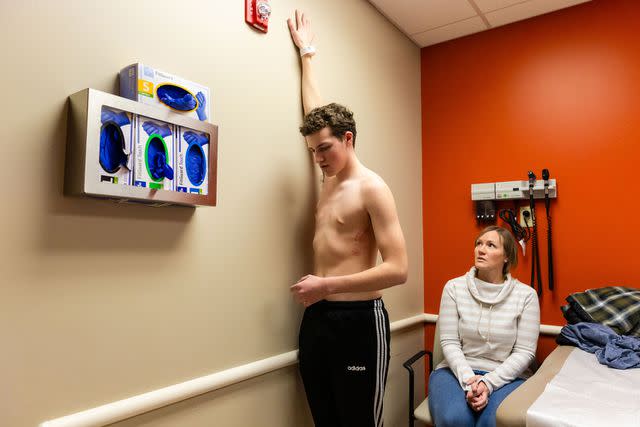
Bonnie Ryan/Children's Nebraska
Carson Sudbeck and his mom EmilyFinally, his mother said he could ask their family doctor about the corrective surgery when he went for his back-to-school physical in fall 2023.
At his August appointment, Carson told the doctor, “I’ve looked at getting my chest fixed.”
“And without hesitation, the doctor just said, ‘Okay. Yeah. It's pretty prominent. I’ll give you a referral right away,” Emily recalls. “I was kind of shocked that it was that simple.”
Emily felt guilty when the doctor agreed so quickly. "I left that appointment feeling a lot of emotions," his mother says. "I felt I had failed him as a parent because I hadn't done something sooner, or hadn't recognized it."
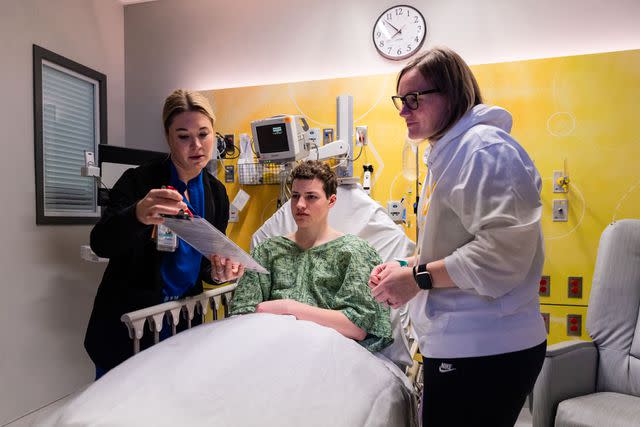
Bonnie Ryan/Children's Nebraska
Carson Sudbeck with nurse Caitlin Mertz (left) and mom Emily (right)Related: Teenager Collapses and Dies After Completing Cross Country Race: 'He Died Doing What He Loved'
In September, Carson met with specialist Dr. Robert Cusick, pediatric surgeon at Children’s Nebraska and professor of surgery at the University of Nebraska.
“Right from the get-go, he was like, ‘Oh we can absolutely fix this. No trouble,” Emily says.
Cusick sees between 50 to 100 patients with pectus excavatum each year — he’s performed the corrective surgery on about 275 patients. He says it occurs in 1 in 150 people.
“This is more common than people realize,” says Cusick. “It’s not just cosmetic — there’s growing evidence that it really impairs heart and lung function.”
Carson's surgery was on January 10, 2024. Two stainless steel bars were inserted in the middle of his chest, in what his surgeon describes as a “minimally invasive” procedure that left small scars under his arms.
The bars were placed underneath the sternum to elevate it, Cusick explains. He performed a procedure called cryoablation, which freezes four nerves on each side and numbs the chest for three to six months.
When Carson woke from surgery, the first question he asked his mother was, ‘Can you take a picture?”
His chest looked exactly how he'd hoped. “That’s my dream,” he said to his family at the time. “I look normal."
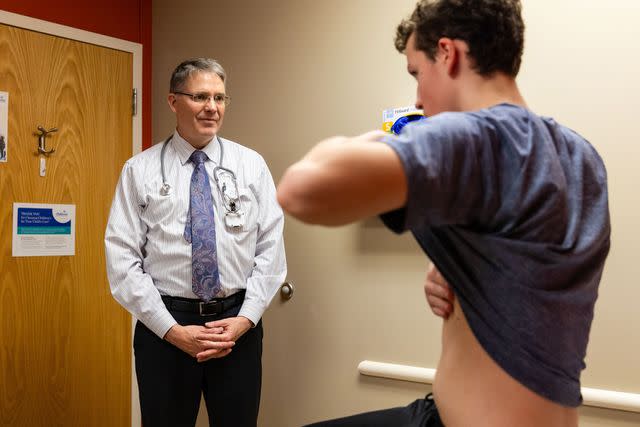
Bonnie Ryan/Children's Nebraska
Children's Nebraska pediatric surgeon Robert Cusick, M.D., with Carson SudbeckThe first week after the surgery, Carson says, “I could barely stand up and get out of bed. Then every week I got a lot better.”
The second week after surgery, he returned to school. A month later, he was carrying his backpack. Carson returned to track practice at the beginning of March, running two miles a day. He participated in his first track meet on April 4, 2024. While he was only supposed to run one event, "that quickly turned into two," Carson says. "It felt really good."
He spoke to PEOPLE a week before his three-month, post-surgery mark. He was already back at the gym and doing leg work but was looking forward to being cleared for any activity, including upper body weightlifting. "I'll be able to let loose and do everything," he says.
He says he's "still getting used to the breathing" with his new chest, since his lungs can expand more. "My posture is better. My voice is better," he says.
Overall, he's pleased with the outcome. "It looks perfect," he says.
He can't wait to show it off this summer at the pool.
“I’m going to really impress all the ladies – look good as always,” he says. “Can’t wait."
For more People news, make sure to sign up for our newsletter!
Read the original article on People.


